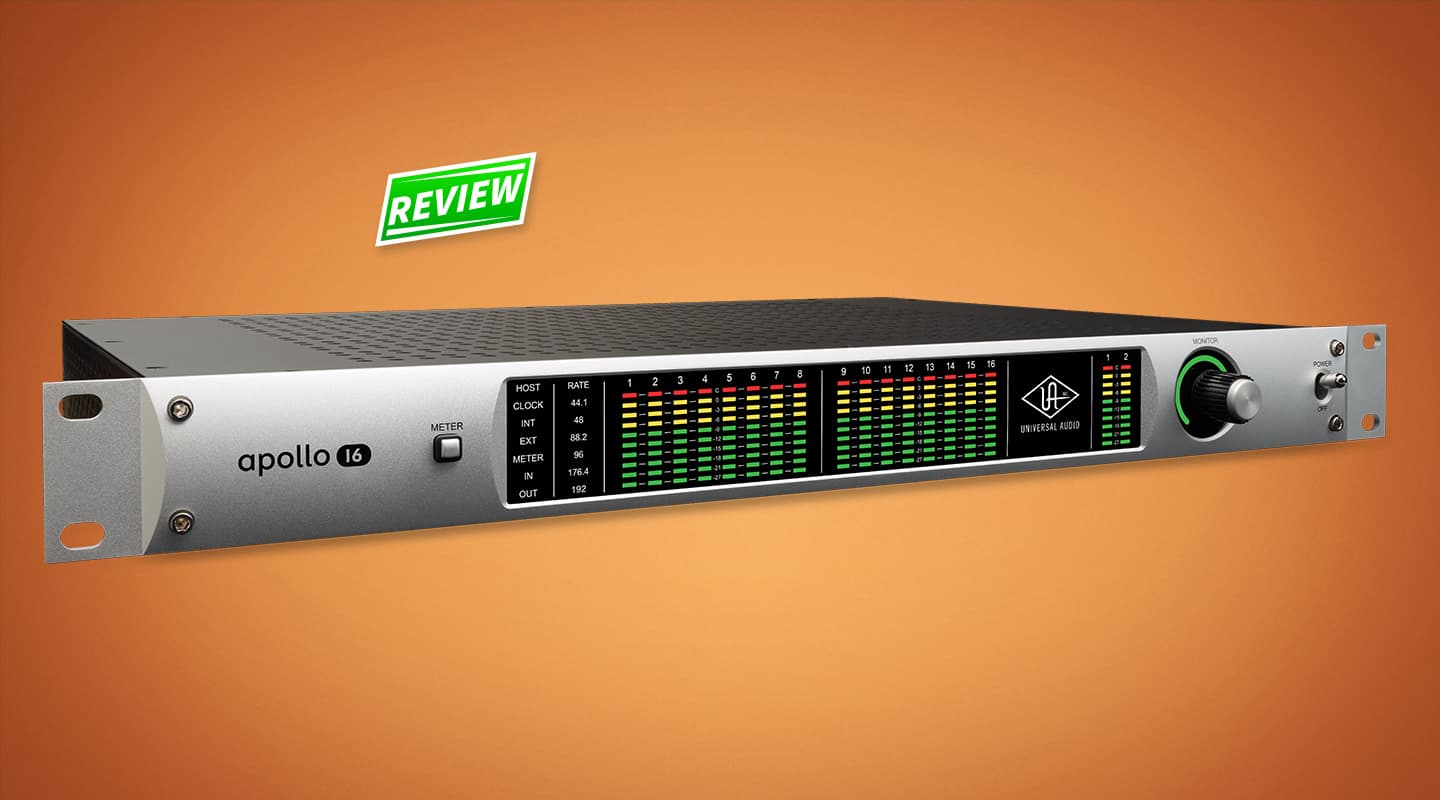
Review: Universal Audio Apollo 16 Interface
Apollo launched to plenty of fanfare, but Apollo 16 has arrived quietly to get the job done.
Universal Audio’s original Apollo interface [reviewed in Issue 88] combined UA’s expertise in both the analogue and digital domains into one compact and efficient package. It felt like the culmination of what UA had been building up to with UAD-2. It was timely, and consequently, a very well-received piece of recording technology. While the original unit pleased a variety of users with its four preamps, ADAT and Firewire ports, and 1/4-inch TRS connectivity, the new Apollo 16 shows UA’s initial launch was merely an exploratory mission and now has its sights set higher up the market.
The first thing to note is the Apollo 16 doubles the overall converter count to (surprise, surprise) 16 channels of AD/DA conversion supplied on two sets of dual DB25 connectors. The inputs can be globally set to +4dBu or -10dBV reference levels, while the outputs can be configured in adjacent pairs, which is handy for matching outboard. Gone are the onboard preamps, ADAT ports and rows of TRS sockets. The Apollo 16 is really designed to be used alongside a rack of outboard pres and, ideally, a patchbay.
HEALTHIER BITE
The Apollo 16 carries the same DSP firepower as the original with four SHARC processors handling all digital routing and processing duties including those of the onboard UAD-2 plug-in architecture. The most notable enhancement here is the expansion of the Console super-low-latency monitoring software. Console now offers four independent monitor mix buses as well as two effects auxiliaries — finally you can appease the nervy drummer, the passive-aggressive bassist, the monomaniacal singer and the lead guitarist, all with sub 2ms latency! And, of course, you can add real-time UAD plug-ins to any source, though you’ll have to pay extra for all but the included Analogue Classics bundle. The Apollo 16 will run at any sample rate from 44.1-192k at 24 bits per sample, so the combination of high sample rate conversion and Thunderbolt connectivity should see Mac owners future-proofed for some time to come.
There’s always some lively online debate about the quality of this-versus-that digital conversion, and the Universal Audio converters have a few doubters amongst the scores of enthusiasts. Personally, I thought the Apollo sounded great and the Apollo 16 sounds great too. There’s a couple of dB improvement in signal-to-noise ratio on the inputs, now at 119.25dBA, as well as a better THD+N figure of -112dB. Without having both units side by side I can’t comment on the subtle changes between these two iterations of the UA approach but the sound I hear is clear and detailed without being clinical, and performs similarly to other converters of this ilk. Mixes present a satisfyingly wide and open soundstage with panning points well-represented and depth of image definitely a cut above the previous generation of interfaces on the market. The ability to split a mix into 16 channels for routing to a console while using the internal UAD-2 plug-ins presents undeniable advantages in terms of overall flexibility. The extreme low latency monitor mix functions of Console are also a very valuable tool for tracking.
NEED TO KNOW


Once again it’s hard to fault UA on a new piece of kit. The Apollo 16 has been well thought out, well implemented and sounds great. My only quibbles would be the lack of a dedicated headphone output and the wall wart power supply. But the unit is only 1U with a locking power connector, does just about everything else and won’t eat up room in your rack where you could be putting other tasty outboard. Not one for the mobile recordist, but a quality piece of gear that will enhance many medium to high-end rooms without altogether breaking the bank.
















RESPONSES